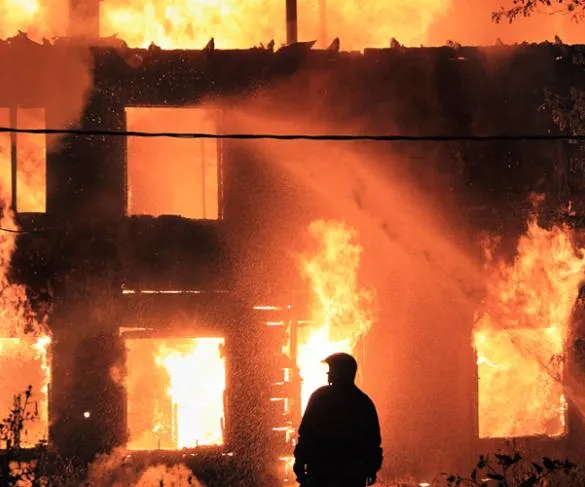A guide to reducing the risk of fire
1.
When incorporating fire detection and alarm systems, roof vents and other “fire stopping works” into the project, these should be completed, where possible, prior to the fitting out of fixtures and fittings.
2.
If the building is going to be left unoccupied, temporary smoke detection and security alarm systems should be considered, preferably with remote monitoring to a responsible individual who can quickly access the property if the alarm is activated. This can now be achieved through various phone applications. The required power supply should be by way of a battery or if wired to a temporary source it should be possible to switch these on/off independently of anything else that may be working from the temporary source.
3.
If the building is going to be left unoccupied, the electricity supply should be switched off and if possible isolated from its power supply, i.e. the plug removed.
4.
Any tools being powered by the supply should be unplugged when not in use, and at the end of the working day, removed from the building or if this is not possible they should be placed in a secure room and/or cabinet.
5.
Any battery packs should not be left on charge when the building is unoccupied. Battery packs can generate a substantial amount of heat and in some instances have been the cause of fires, especially with Lithium batteries. It is also recommended that when work ceases batteries are disconnected from tools and stored in a secure room and/or cabinet.
6.
Contractors Power tools should be PAT Tested (Portable Appliance Testing) and documentary evidence of this should be kept by the Contractor.
7.
Halogen work lamps generate substantial heat and it is recommended to avoid using them when possible. If they are used they should be put in storage at the end of the working day once they have had opportunity to cool. The prolonged use of these lamps to illuminate work areas should be avoided.
8.
If illumination is required, cooler low voltage bulbs should be used. Standard tungsten bulbs can also get hot and if being used in poorly ventilated areas can cause a build-up of heat. If they are used they should be switched off and isolated when the building is unoccupied.
9.
The wiring to lighting strings, power tools, chargers etc should be checked for mechanical damage or over-stretching on a regular basis by a qualified/experienced person. Power tools can be damaged whilst on site and regular checks should be made to ensure they are safe to use and do not present a fire hazard due to any damage that has occurred to them.
10.
Lighting strings should be checked regularly for damage. The coiling of wiring should be avoided, especially when in use, as this can cause mechanical damage to the core wires that cannot always be seen and can produce a large amount of heat. To avoid damage when not being used, wiring should either be stored on appropriate drums, winders, or loose wiring should be looped. Wiring should also be stored carefully in a secure room and/or cabinet.
11.
If it is a requirement of security to use lighting outside of working hours, then the contractor should consider employing a night watchman, who can raise the alarm if required.
